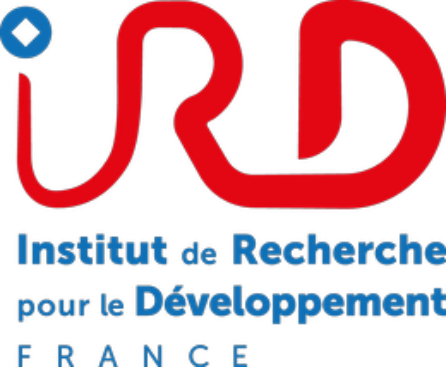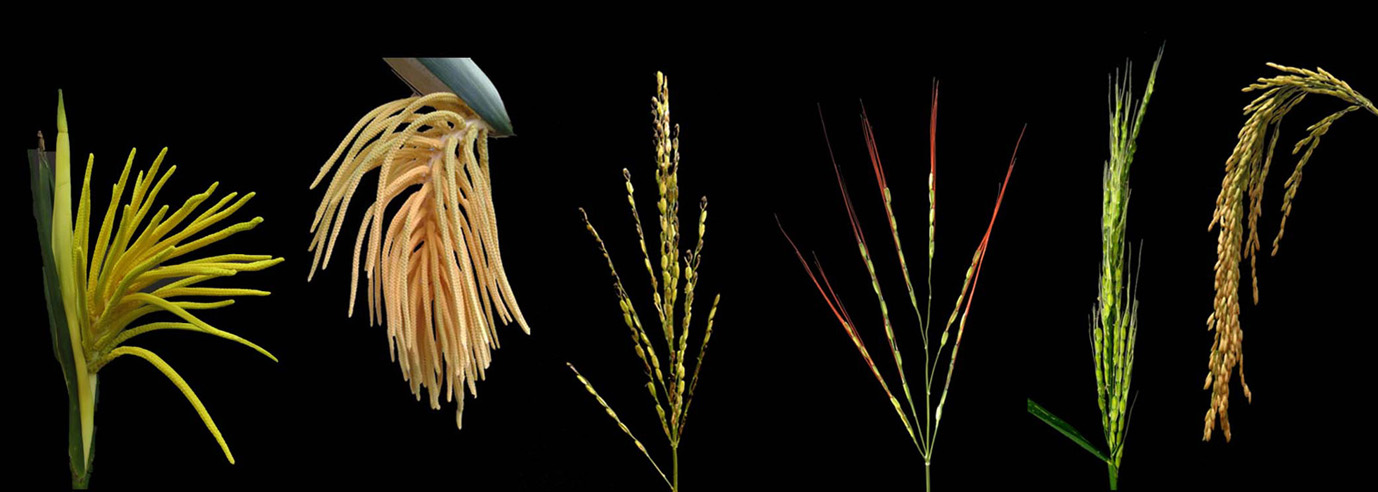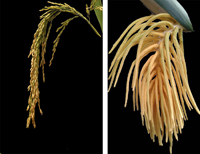The EDI team is developing research activities on two plant models: rice as a system to investigate important agronomic traits in grasses; and palm species of the genus Chamaedorea (especially the pacaya palm Chamaedorea tepejilote), as a model to study domestication and male-female inflorescence structural dimorphism. Since the inflorescences of grasses and palms are homologous structures, these two distinct monocot groups constitute an excellent model for evo-devo studies. A huge diversity of inflorescence structure is observed between wild and domesticated species in these two plant models, with higher complexity in domesticated lineages. In rice, domestication has led to the appearance of two crop species: the Asian crop species Oryza sativa, derived from the wild relative Oryza rufipogon and the African crop species Oryza glaberrima, derived from Oryza barthii. Inflorescence structural diversity also exists within domesticated species, especially in rice. The structure of the inflorescence depends firstly on the establishment and fate of meristems during its early development (defining the order of branching and number of branches) and secondly on axis elongation (defining inflorescence size). Beyond the interest of understanding the evolution of this morphological feature, inflorescence diversity represents a largely untapped genetic resource for modern breeding.
Within this general context, our research focuses on several complementary and interconnected themes:
1. Morphological and cellular basis of inflorescence diversity (rice and palms)
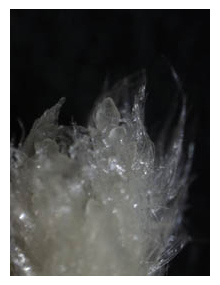 We are studying the individual contributions made by key morphological traits to inflorescence structural variation via detailed phenotyping using the rice model. For this purpose, large populations representing inter-and intra-specific panicle diversity have been established in the DIADE unit or in collaboration with CIAT (Colombia) and LMI RICE/AGI (Vietnam). Mature panicle phenotyping has been conducted using P-TRAP software (AL-Tam et al. 2013). Studies so far have revealed that panicle structure diversity in rice is governed principally by meristem establishment rates. In order to better characterise early inflorescence developmental stages in both palms and rice, a range of different microscopic techniques are being used. In the case of rice, the main variable feature observed is inflorescence/rachis meristem size, which we found to be greater in the crop species and correlated with a larger number of primary branches (Ta et al. 2017).
We are studying the individual contributions made by key morphological traits to inflorescence structural variation via detailed phenotyping using the rice model. For this purpose, large populations representing inter-and intra-specific panicle diversity have been established in the DIADE unit or in collaboration with CIAT (Colombia) and LMI RICE/AGI (Vietnam). Mature panicle phenotyping has been conducted using P-TRAP software (AL-Tam et al. 2013). Studies so far have revealed that panicle structure diversity in rice is governed principally by meristem establishment rates. In order to better characterise early inflorescence developmental stages in both palms and rice, a range of different microscopic techniques are being used. In the case of rice, the main variable feature observed is inflorescence/rachis meristem size, which we found to be greater in the crop species and correlated with a larger number of primary branches (Ta et al. 2017).
2. Genetic basis of inflorescence diversity (rice)
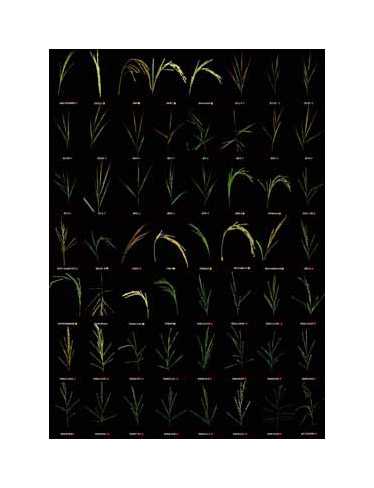 In order to identify genetic factors controlling panicle structure in rice, two complementary approaches have been developed using different genetic resources: (i) Identification of QTLs associated with panicle structure variation between O. sativa and O. glaberrima using a population of Chromosome Segment Substitution Lines (CSSL) between the two species, (ii) identification of QTLs associated with intraspecific panicle structure variation in rice crop species based on genome-wide association studies (GWAS) using two different panels of O. sativa and O. glaberrima accessions. The CSSL lines and the two panels of accessions were phenotyped as described above in collaboration with CIAT (Colombia), LMI RICE/AGI (Vietnam) and INERA (Burkina-Faso). Genetic analyses have allowed the identification of several QTLs associated with panicle morphological traits (Ta et al. 2018 for the O. sativa population). The characterisation of the corresponding genomic regions is in progress.
In order to identify genetic factors controlling panicle structure in rice, two complementary approaches have been developed using different genetic resources: (i) Identification of QTLs associated with panicle structure variation between O. sativa and O. glaberrima using a population of Chromosome Segment Substitution Lines (CSSL) between the two species, (ii) identification of QTLs associated with intraspecific panicle structure variation in rice crop species based on genome-wide association studies (GWAS) using two different panels of O. sativa and O. glaberrima accessions. The CSSL lines and the two panels of accessions were phenotyped as described above in collaboration with CIAT (Colombia), LMI RICE/AGI (Vietnam) and INERA (Burkina-Faso). Genetic analyses have allowed the identification of several QTLs associated with panicle morphological traits (Ta et al. 2018 for the O. sativa population). The characterisation of the corresponding genomic regions is in progress.
3. Genome expression related to meristem fate and inflorescence diversity (rice and palms)
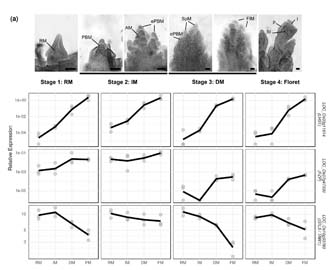 In order to identify the types of gene or regulatory gene network governing inflorescence structural diversity, two complementary approaches were pursued: (i) a candidate gene approach based on knowledge from O. sativa, and (ii) genome-wide expression analysis based on RNA-seq.
In order to identify the types of gene or regulatory gene network governing inflorescence structural diversity, two complementary approaches were pursued: (i) a candidate gene approach based on knowledge from O. sativa, and (ii) genome-wide expression analysis based on RNA-seq.
In the case of the rice model, these approaches led to the observation that orthologous genes between species share conserved expression domains (in spatial terms) during inflorescence development but display variations in the rate and/or the timing of their expression (Harrop et al. 2016; Ta et al. 2016, Ta et al. 2017, Harrop et al., 2019). Amongst the data obtained, a group of genes encoding proteins of the APETALA2 (AP2) family was of particular note as implicated in the regulation of meristem establishment and/or fate control during inflorescence development, thereby contributing to panicle structure diversity. Functional analysis via genetic transformation was initiated for some of these genes and will continue in the coming years.
In the case of the pacaya palm, a RNA-seq dataset was developed and analyses are still in progress. Efforts will be devoted subsequently to the integration of the rice and palm datasets so as to assess to what extent the two plant models share similar gene networks governing variations in inflorescence structure.
The projects listed above involve strong collaborations with research partners worldwide:
- UMR DIADE teams (RICE, DYNADIV, CERES, F2F)
- UMR AGAP_ DAR, PAM, M2P2 teams (Montpellier, France)
- UMR RDP_ MOSAIC team (Lyon, France)
- UMR Biométrie et Biologie Évolutive (Lyon, France)
- LMI RICE lab (IRD, Agricultural Genetics Institute, University of Science & Technology of Hanoi), Vietnam
- University of Milan_MADS-box team (Italy)
- University of Vienna, Department of Botany and Biodiversity Research (Austria)
- University of Algarve, Department of Electronic and Computer Engineering – DEEI (Portugal)
- INERA (Burkina Faso)
- CIAT (Colombia)
- CGIAR rice research projects (GRISP, CRP Rice) under the leadership of IRRI (Philippines)
- University of Kasetsart (Thailand)
- Universidad San Carlos de Guatemala (Guatemala)
- Universidad Nacional (Colombia)

